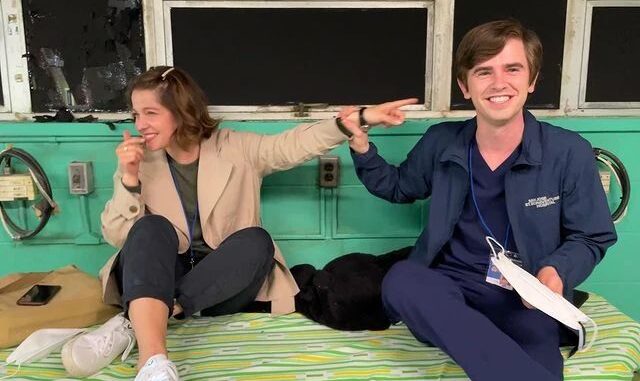
Medical dramas have long been a staple of television storytelling, offering audiences a blend of gripping emergencies, ethical dilemmas, and deeply personal character arcs. Yet rarely does a single episode transcend the typical formula and deliver an experience so intense, so emotionally rich, and so cinematically executed that it leaves viewers shaken — both literally and figuratively. That’s exactly what The Good Doctor achieved in its unforgettable earthquake episode, a turning point in the series that elevated its storytelling to a whole new level.
From the very first rumble, the tone of the episode shifted. Gone were the standard patient cases and operating room debates. In their place was pure chaos — the kind that doesn’t come with warning signs or time to prepare. A massive earthquake struck San Jose, turning the hospital into a battleground not just for medicine, but for survival itself. Every character — from seasoned surgeons to first-year residents — was suddenly thrown into a situation that demanded immediate action, unwavering courage, and painful sacrifice.
What made this episode stand out wasn’t just its high-stakes disaster setting. It was how the showrunners chose to tell the story through raw, intimate moments amid the destruction. Instead of sensationalizing the catastrophe, the writing focused on human connection, vulnerability, and bravery under impossible pressure. Viewers weren’t just watching walls collapse or patients scream — they were watching characters they’ve grown to love reveal their deepest fears and greatest strengths.

Dr. Shaun Murphy, the heart of the series, faced perhaps his most dangerous situation to date. Known for his precision, logic, and sometimes socially awkward interactions, Shaun found himself in an environment that stripped away structure and demanded split-second decisions. When he heard the cries of a child trapped beneath rubble, Shaun didn’t hesitate. He crawled into a crumbling basement, risking his life with every step, to try and save her. It was a powerful moment that reminded fans why he is more than just a brilliant surgeon — he is, at his core, a deeply compassionate human being.
One of the most impactful scenes came not during the quake itself, but in its aftermath. As the dust settled and emergency crews arrived, the staff gathered outside, some bloody, some broken, all visibly exhausted. But their eyes told a deeper story — of gratitude, grief, and resilience. There were tears for those they couldn’t save and hugs for those who made it. The camera lingered on Shaun as he looked at the sunrise breaking through the smoke — a symbol of hope rising from devastation.
What’s remarkable is how The Good Doctor used this natural disaster not just for drama, but for growth. Each character came out changed. Shaun proved that his instincts in chaos are as sharp as in a sterile OR. Dr. Lim’s leadership was tested and ultimately reaffirmed. Glassman rediscovered his purpose. And the audience was left with the realization that heroism doesn’t always come with fanfare — sometimes, it’s just showing up, doing your job, and caring deeply when everything around you is falling apart.
Social media lit up after the episode aired. Fans praised the realism of the quake scenes, the emotional weight of the decisions made, and the courage displayed by the characters. Many called it the most powerful episode in the series’ history. Others shared personal stories of surviving earthquakes or working in hospitals during disasters, underscoring just how real and resonant this story was.
From a production standpoint, the episode was a triumph. The set design recreated the destruction with haunting authenticity. The sound design — from distant sirens to creaking steel beams — pulled viewers into the moment. And the pacing kept hearts racing without ever losing emotional clarity.
In the end, this wasn’t just an episode of television. It was a tribute. To medical professionals. To first responders. To every human being who finds strength in the unlikeliest moments. The Good Doctor reminded us that even in the darkest hour, there is light — in compassion, in courage, and in the unyielding will to save lives.
